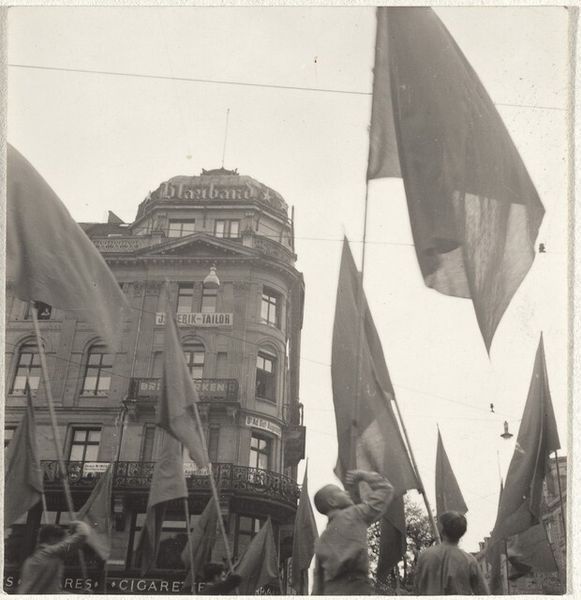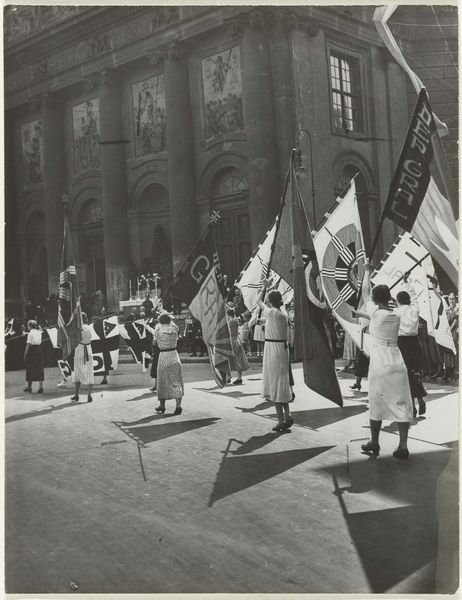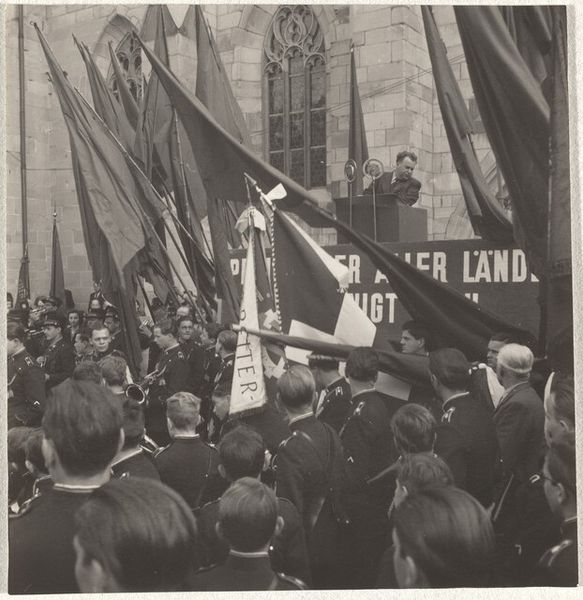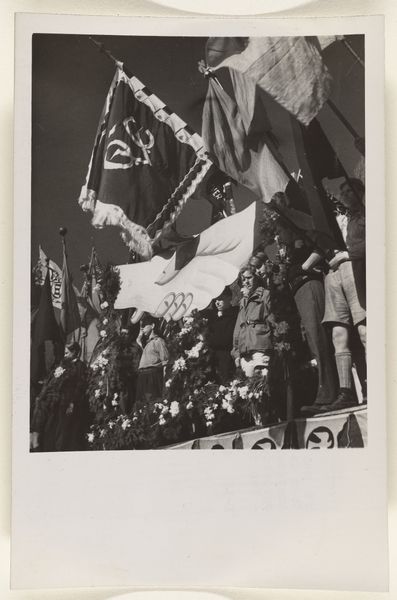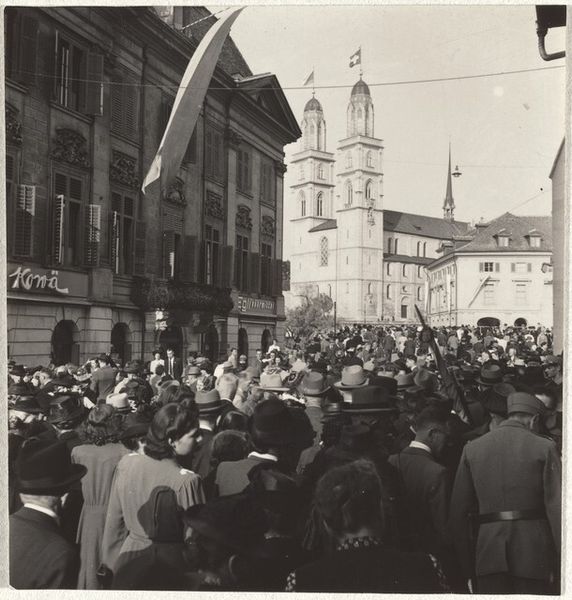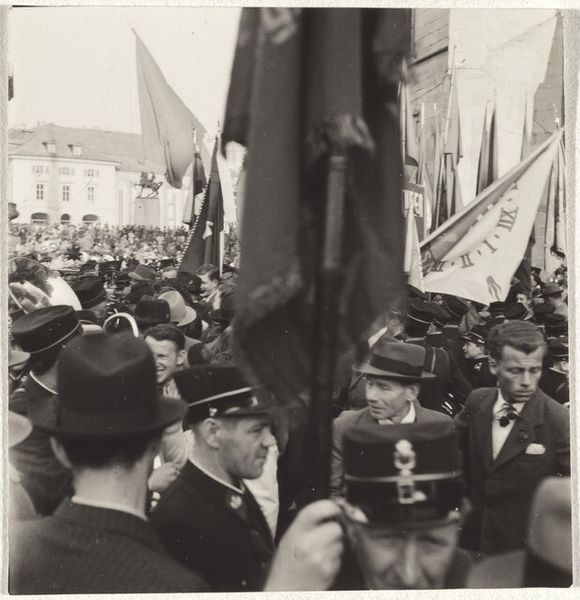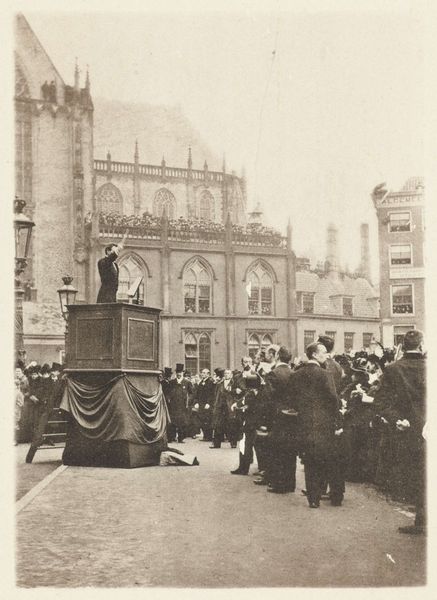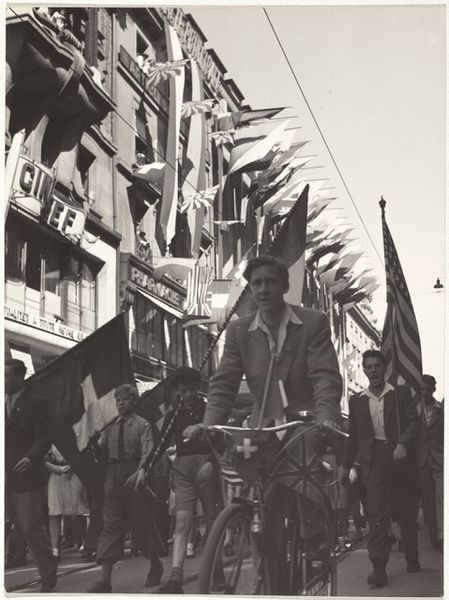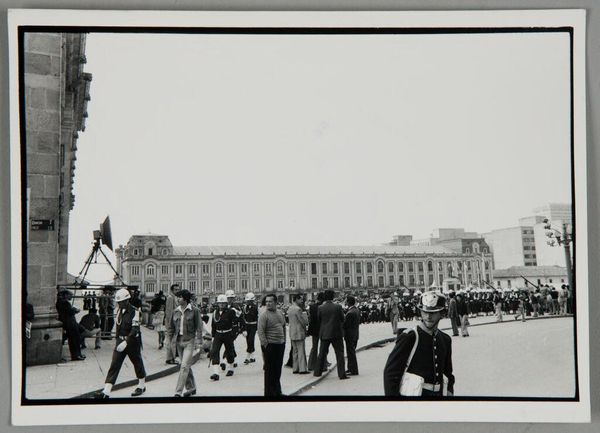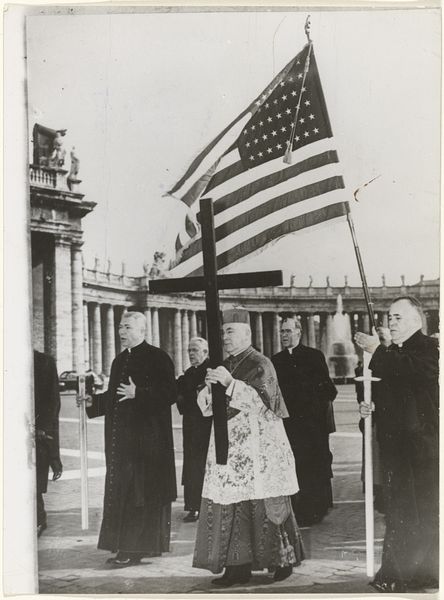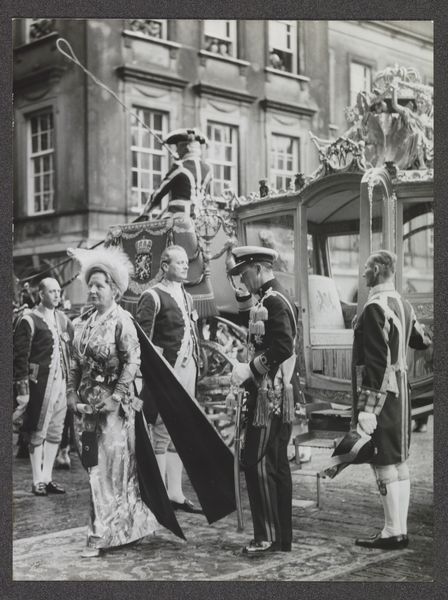
Internationale vlaggenparade voor stadhuis Middelburg ter ere van de boomplantdag Possibly 1947
0:00
0:00
photography, gelatin-silver-print
#
landscape
#
outdoor photograph
#
outdoor photo
#
photography
#
gelatin-silver-print
Dimensions: width 17.5 cm, height 24 cm
Copyright: Rijks Museum: Open Domain
Editor: This gelatin-silver print, "Internationale vlaggenparade voor stadhuis Middelburg ter ere van de boomplantdag," possibly from 1947, shows a flag parade in front of a town hall. The flags and scaffolding create a visually interesting pattern. How do you see this work? Curator: Well, for me, this photograph is compelling due to the way it documents labor and material culture. Consider the flags themselves—mass-produced objects that represent specific ideologies and national identities, elevated here in this town square. It also makes me think about photography itself, another manufactured object used to document this event, thereby cementing a specific narrative. Do you think the artist consciously chose this low angle to emphasize the height and imposing nature of both the flags and the town hall? Editor: That’s a great point! It's easy to overlook the flags as just symbols, but thinking of them as mass-produced objects, makes me consider the labor involved in their creation and distribution. To your point, I think that the angle highlights those powerful structures by using children. What message do you think that conveys? Curator: Exactly. And the presence of scaffolding suggests ongoing construction, both literal and symbolic, as the town rebuilds, and new ideologies take shape post-war. How does seeing the buildings as sites of construction, or the materials used in their rebuilding, inform our understanding of that period's societal goals and challenges? Editor: That's such a nuanced interpretation. It makes you think about all the different kinds of materials used to build and maintain a society. Curator: It also pushes us to think critically about how even seemingly celebratory images can be unpacked to reveal layers of production, ideology, and social context embedded within them. Editor: I will definitely be considering the means of production differently going forward. Thanks for helping me delve deeper into the photo. Curator: It's been a pleasure. Looking at the materiality really transforms our understanding, doesn’t it?
Comments
No comments
Be the first to comment and join the conversation on the ultimate creative platform.
